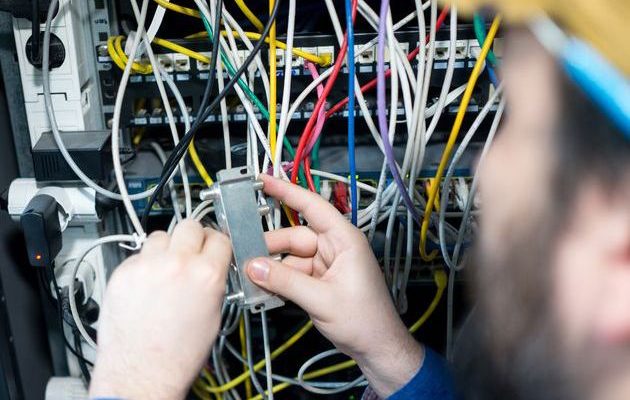The study just published by the UFC Que Choisir will shower the concert of praise that accompanies the tenth anniversary of the France Very High Speed (FTHD) plan. Launched in 2013 under François Hollande, it provided that all French people could benefit from internet access at a speed greater than 30 Mbit/s by the end of 2022 and that 80% of the population could be eligible for the optical fiber.
If the executive speaks of a real success, recalling in particular that France is one of the countries with the most fiber in Europe, the UFC Que Choisir believes that a real digital divide has taken place on the territory. Without denying that the objectives of the FTHD plan have not been achieved, the association notes that they mask strong disparities.
Very high speed “at a discount”
This 100% very high-speed coverage only takes theoretical speeds into account, regardless of the technology used, wired – fiber optic, ADSL, cable – or wireless – satellite, 4G fixed THD radio. However, for 17.2% of households, or 11.8 million French people, access to very high speed is only possible by subscribing to offers using this second category of technologies, known as wireless.
Internet access solutions via satellite, 4G or via an external antenna (THD radio) do not offer the same performance and stability as their wired equivalents. UFC Que Choisir speaks of “second-rate technologies” (see table at the bottom of the article).
Not only “non-wired offers are rationed in terms of the volume of usable data, or even do not offer common services such as access to television” but in addition “speeds can collapse depending on weather conditions or the number of users using the Internet simultaneously.
This instability sometimes makes digital use cases requiring good latency, such as video conferencing sessions or online games, simply impossible. This latency would be, according to the association, more than 50 times higher by the satellite than via the optical fiber.
These offers which are only a very high speed “at a discount” are, moreover – a shame -, more expensive, if we take into account the amount of the subscription and the purchase or rental of equipment specific (antenna, dish, decoder).
A third of the inhabitants of downgraded rural communes
The digital divide is coupled with a territorial divide. If 82.8% of consumers are connectable to fiber according to statistics for the fourth quarter of 2022, this means on the contrary that 17.2% are not. Unsurprisingly, the most rural departments are the most disadvantaged.
Nearly a third (32.6%) of the 8.8 million inhabitants of municipalities with less than a thousand inhabitants do not have a very high speed internet connection. Worse still, 18.4% of the inhabitants of these municipalities do not even have “good broadband” (8 Mbit/s) and 10.1% are simply deprived of access of minimum quality (3 Mbit/s). s).
In 36 departments out of the 101 in France, at least one consumer in ten does not have access to good wired broadband. In five departments (Ardèche, Côtes-d’Armor, Guadeloupe, Manche, Martinique), it is even at least one subscriber in five. At the top of this sad ranking, we find the English Channel where more than one citizen in four (28.7%) is deprived of wired access to good broadband.
The UFC Que Choisir offers on its site to test the real quality of its connection to the Internet. For its part, Arcep, the telecoms regulatory authority, puts a map of France online allowing from a postal address to know the different technologies available and the associated commercial offers.

The deployment of fiber, source of many disputes
If the victims of this digital divide are impatiently awaiting the arrival of fiber on their territory, the study by UFC Que Choisir reminds us that its deployment is the source of numerous disputes. Appointments not honoured, refusal to carry out the civil engineering work allowing the connection, damage to the building, technical defects, illegal disconnections… The analysis of the more than 500 disputes handled in 2022 shows the extent of the problems encountered.
The association is not the only one to point the finger at the chaotic deployment of fiber. The latest report from the Electronic Communications Mediation evoked a veritable obstacle course to switch from ADSL to fiber. “While these problems have been known for years, their persistence demonstrates the permissiveness of the legal framework for the deployment of fiber and a form of indifference and complacency on the part of the public authorities”, tackles the UFC Que Choisir.
In the eyes of the association, this situation is all the more deplorable as consumers have few means to compel telecom operators to solve their problem. It is then the double penalty. “In addition to not having internet access, they still have to pay several hundred euros to operators (subscription, termination fees, etc.). »
Consequently, “the association calls on the public authorities to immediately strengthen the regulation of the sector and the rights of consumers, in particular by establishing an enforceable right to quality internet for all”. This enforceable right would be based both on guaranteed minimum speeds – what Jean-Noël Barrot, Minister Delegate in charge of the digital transition and telecommunications wishes to propose – but also on a system of compensation if these speeds are not reached.
In addition, consumers should be able to terminate their subscription free of charge in the event of connection failure or service interruption. In the event of a prolonged or recurring interruption of the service, the subscription fees would be suspended and automatic compensation introduced.

